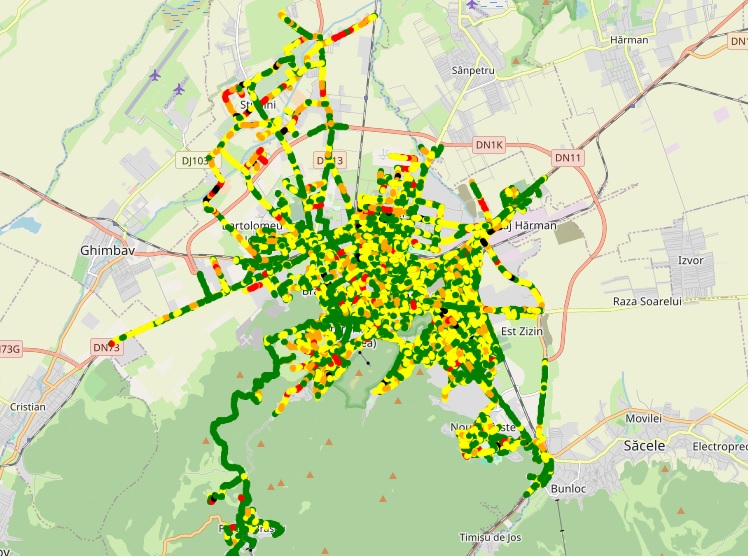Brașov is a city in the Transylvania region (Romania) surrounded by the Carpathian Mountains. It is famous for its medieval Saxon walls and bastions. The city, like all historic cities, combines cobbled streets in its oldest districts and busy avenues in the most modern accesses.
As in all European cities, its challenge in the area of mobility is to improve infrastructure to ensure that both traditional means of transport (car, bus…) and new urban means of transport are able to coexist safely and sustainably. To do this, the first requirement is a good knowledge of the infrastructure, to detect the needs and analyse the costs of adaptation. That is why Gabriela Vlad, head of IT department in the City Council, launched a project to analyse the status of the pavement in the city, using the ASIMOB Autonomous Urban Inspector.
The monitoring service was carried out in collaboration with the Romanian company Creative Media SRL, which facilitated the local implementation, the adaptation of the web application to the Romanian language and the relationship with the technical managers of the city council.
The information was collected from a single car, transformed into an Autonomous Inspector, which circulated at normal speed through the 517 km of streets of Brasov, generating data on the defects detected in the ground by Computer Vision and also collecting the vibrations suffered by the vehicle, to determine the impact of the defects on the vehicles. The result is the detection of more than 33,500 defects, including cracks, potholes and alligator skins, with which expert indexes of pavement quality are obtained, and the determination of the most degraded areas classified by streets.
The cognitive Artificial Intelligence techniques used in the ASIMOB Autonomous Inspector allow information to be collected from vehicles that circulate at normal speed, generating expert data on the pavement and with an optimal cost-benefit ratio.
